From Insights to Interventions – FAQs
Home » From Insights to Interventions – FAQs
From Insights to Interventions – FAQs
Home » From Insights to Interventions – FAQs
Home » From Insights to Interventions – FAQs
Home » From Insights to Interventions – FAQs
SCP Health Thought Leadership
November 15, 2024
The white paper, “From Insights to Interventions” explores the emergency department’s unique vantage point in the health care system and how the data gleaned from that vantage point can uniquely identify gaps in care, and drive high-quality, cost-effective transformation across the continuum of care.
Emergency departments are accessed by any patient that perceives a need for unscheduled health care. This includes all ages, all socioeconomic and ethnic demographics, different severities of illness or injury, and all payors. Importantly, emergency departments also interact with a high volume of very sick patients and interface with nearly every other part of the health care system in the community.
The volume, acuity, and breadth of ED patient encounters allow in-depth analysis and assessment of patients with high-focus clinical conditions that have an acute need for unscheduled care, including the 30 days after the initial emergency department visit. Our analysis showed the frequency and timing of subsequent hospitalizations and ED return visits. Fully 50% of repeat ED visits and 50% of hospitalizations occurred in the first 7-10 days after an initial ED visit. While some of those “bounce-backs” are appropriate, many are avoidable.
The Care Gap begins when a patient leaves the hospital and ends when the patient either gets better or fully engages in meaningful follow-up care. This is a time when patients are not yet better but need to take actions such as get their prescriptions filled, take medications differently, follow their new care plan, get a timely appointment with a primary care physician, and go to that appointment for important follow-up care. Missteps in this vulnerable period often leave patients without any option other than to return to the ED or the hospital. Many of these return visits are avoidable with straightforward interventions – both nonclinical and clinical.
The Care Gap varies in length. However, data identifies a post-discharge window of 7-10 days as the highest risk to patients.
The most important cost of the Care Gap is to the patient – their outcomes and satisfaction are worse without appropriate intervention. The Gap also has additional financial implications for patients, employers, health systems, and payors. For patients that return to the ED or the hospital within 30 days, 50 percent of the cost occurs within 8.5 days after the initial ED discharge. Much of that cost is avoidable.
There are many steps emergency departments can take to help fill the Care Gap, including:
Sign up for our newsletter to receive the latest updates and exclusive content straight to your inbox.

A physician-led team of clinical specialists in emergency, hospital, and critical care medicine, supporting local clinical practices with national resources to deliver high-quality patient care in the communities we serve.
Corporate Phone: (800) 893-9698
Copyright © 2025. All rights reserved.
Please visit SCP Health’s Insurance Request Portal to submit requests related to medical malpractice liability insurance such as coverage verifications, claims history reports, and certificates of insurance. If you experience issues with the portal submission or have a question about the process, please reach out SCP Health’s Risk Management, Safety and Insurance Department at RM@scphealth.com or 337-609-1250.
By clicking the “Submit” button, you are agreeing to the SCP Heath Terms of Use and Privacy Policy
By clicking the “Submit” button, you are agreeing to the SCP Heath Terms of Use and Privacy Policy
By clicking the “Submit” button, you are agreeing to the SCP Heath Terms of Use and Privacy Policy
By clicking the “Submit” button, you are agreeing to the SCP Heath Terms of Use and Privacy Policy
By clicking the “Submit” button, you are agreeing to the SCP Heath Terms of Use and Privacy Policy
By clicking the “Submit” button, you are agreeing to the SCP Heath Terms of Use and Privacy Policy
By clicking the “Submit” button, you are agreeing to the SCP Heath Terms of Use and Privacy Policy
By clicking the “Submit” button, you are agreeing to the SCP Heath Terms of Use and Privacy Policy
By clicking the “Submit” button, you are agreeing to the SCP Heath Terms of Use and Privacy Policy
By clicking the “Submit” button, you are agreeing to the SCP Heath Terms of Use and Privacy Policy
Please provide your contact information. An SCP representative will contact you accordingly.